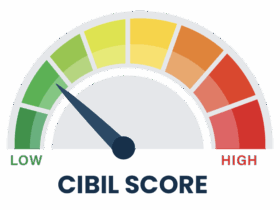Investors are often searching for ways to safeguard their portfolios against unpredictable market conditions. One of the most effective tools for protecting against the erosive effects of inflation is inflation-protected bonds (IPBs). These bonds are especially valuable in periods of economic uncertainty, and they have become increasingly relevant for UK investors.
In this article, we’ll explore how inflation-protected bonds work, their key benefits, and how UK investors can incorporate them into their portfolios.
Understanding Inflation-Protected Bonds
Inflation-protected bonds are designed to shield investors from inflation risk by adjusting both the principal and interest payments based on inflation. In the UK, the most common type is the index-linked gilt, issued by the government. These bonds are tied to an inflation index, usually the Consumer Price Index (CPI), ensuring their value rises with inflation and preserving the purchasing power of returns.
The main feature of inflation-protected bonds is their ability to increase in value when inflation rises. For example, if inflation increases by 2%, the bond’s principal and interest payments will rise by the same percentage, keeping the bond’s real value intact over time.
In addition to government-issued index-linked gilts, inflation-protected bonds can also be found through mutual funds or exchange-traded funds (ETFs), which offer diversification by pooling multiple bonds into a single investment product.
Key Benefits of Inflation-Protected Bonds for UK Investors
Inflation-protected bonds (IPBs) preserve purchasing power by adjusting both principal and interest with inflation. Unlike traditional bonds, whose returns are eroded by inflation, IPBs maintain their real value. For example, if inflation is 4%, an investor with a regular bond loses 4% in real returns, while an IPB investor sees their payments rise with inflation, keeping their purchasing power intact.
Stable and Predictable Returns
IPBs offer stability, as they adjust with inflation, providing a reliable income stream. Unlike stocks, which can be volatile, or other bonds susceptible to interest rate changes, IPBs offer a steady return, making them ideal for conservative investors or those seeking stability during uncertain economic periods.
Tax Advantages
Certain inflation-protected bonds, like government-issued index-linked gilts, may offer tax benefits. For some investors, interest payments can be tax-free, and the inflation adjustments to the principal may also be exempt from taxes, enhancing overall returns, particularly for those in higher tax brackets.
Diversification and Risk Mitigation
Adding IPBs to a portfolio can reduce risk exposure by diversifying away from equities and non-inflation-protected bonds. With a low correlation to stocks, IPBs often perform well when equities struggle, especially in inflationary environments, making them an effective tool for risk mitigation and long-term portfolio growth.
Considerations for Investing in Inflation-Protected Bonds
While IPBs protect against inflation, they are still subject to interest rate risk. When rates rise, the market value of all bonds, including IPBs, tends to fall. However, IPBs are generally less sensitive to interest rate changes than traditional bonds, since their returns are linked to inflation, not nominal rates.
IPBs usually offer lower initial yields than traditional bonds due to the inflation protection they provide. While this means lower immediate returns, the real value of IPB returns remains preserved during inflation, unlike traditional bonds, whose returns can be eroded.
IPBs are most beneficial when inflation is expected to rise. If inflation remains low or stable, the adjustments to the bond’s principal and interest may be minimal, resulting in modest returns. Therefore, it’s important to understand the inflation outlook before investing, as traditional bonds may offer better returns in a low-inflation environment.
IPBs may not always be as liquid as other bonds, depending on market conditions. Buying or selling these bonds, especially in smaller amounts, could be more challenging. Investors should consider this factor if they may need quick access to funds.
When to Consider Inflation-Protected Bonds in a UK Portfolio
IPBs are ideal during times of economic uncertainty, especially when inflation is rising. They act as a hedge, preserving purchasing power when traditional bonds may underperform due to inflationary pressures.
For long-term investors, such as those saving for retirement, IPBs help maintain portfolio value over time. As inflation increases, the bond’s principal and interest payments rise, ensuring the investment’s real value is preserved.
IPBs are particularly useful for retirees or those nearing retirement. While traditional bonds lose value due to inflation, IPBs ensure that income streams keep pace with the cost of living, providing stability in retirement.
How to Invest in Inflation-Protected Bonds in the UK
Investors can buy index-linked gilts directly from the UK Debt Management Office (DMO) or through brokers. These bonds can be purchased in both primary and secondary markets, offering flexibility in pricing and timing.
Investors can also invest through mutual funds or exchange-traded funds (ETFs) that pool multiple inflation-protected bonds. This approach offers diversification and reduces individual bond risk, with ETFs providing liquidity and ease of trading.
For a more hands-off approach, investors can work with a financial advisor or invest in managed portfolios that include inflation-protected bonds, ensuring effective integration into their overall investment strategy.
Conclusion
Inflation-protected bonds offer a unique way for UK investors to protect their portfolios against the damaging effects of inflation. With benefits such as stable returns, diversification, and tax advantages, they can be an important addition to any investment strategy.
While there are some considerations, including interest rate risk and lower initial yields, the long-term advantages make them a valuable tool, especially in times of economic uncertainty. For those interested in learning more about how inflation-protected bonds can fit into their investment strategies, visit this link.








